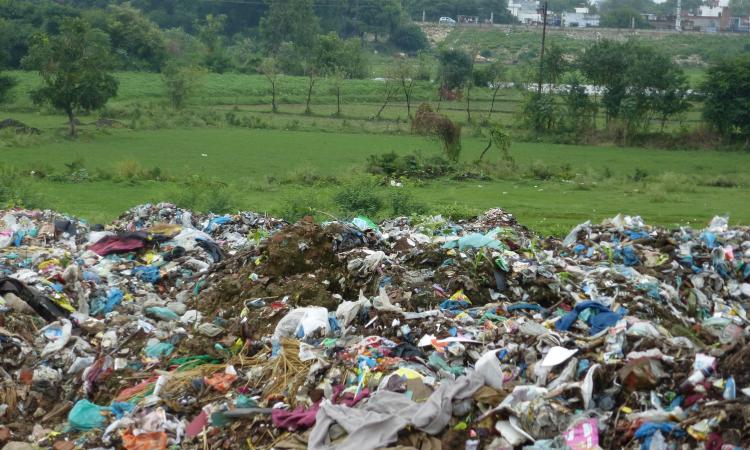
The 2023 State of India’s Environment report, put together by Centre for Science and Environment (CSE) identifies areas where the country is falling behind as regards its Sustainable Development Goals. “The report enables us to understand the challenges, as well as explore the new approaches so that solutions for environmental management are affordable and sustainable,” says Sunita Narain director general, CSE. Narain was officially unveiling the annual publication at a public meeting at New Delhi recently.
“The State of India’s Environment (SoE) is not a story that is unendingly, inexorably dark – it has a lot of silver lining as well, it provides us with a lot of reasons to celebrate as well,” she adds.
Target SDGs
India's performance in terms of the Sustainable Development Goals serves as a case in point; the report's research highlights the states that have fallen behind while also praising those that are making progress. Even the top-performing states, Kerala, Himachal Pradesh, and Tamil Nadu, have seen a decline in performance.
Why is India in this situation while the deadline for the majority of the Goals is only around the corner in 2030? The main cause is the difficulties India is having in achieving 11 of the 17 SDGs. The 2023 study examines a wide range of topics, including assessments of water, plastics, forests, and biodiversity as well as assessments of climate change, agriculture, and industry.
In the past five years, India’s overall global rank in meeting the SDGs – Sustainable Development Goals – has slipped by nine places. In 2022, it stood at 121.
The report has analysed the performance of individual states as well. “An alarmingly high number of states have slipped in their performance of SDGs 4, 8, 9, 10 and 15,” says Richard Mahapatra, managing editor of Down To Earth and one of the editors of the SoE. These numbers refer to the Goals on quality education; decent work and economic growth; industry, innovation and infrastructure; reduced inequalities; and life on land, respectively.
For instance, 17 states experienced a decline in performance in SDG 4 (quality education) between 2019 and 2020. In terms of SDG 15—life on land—25 states are underperforming. 15 states are falling short of the clean water and sanitation goal (SDG 6), while 22 states are falling short of the SDG 8 goal (decent work and economic growth).
SDGs 1 (no poverty), 2 (zero hunger), 3 (quality health and well-being), 5 (gender equality), 7 (affordable and clean energy), 11 (sustainable cities and communities), and 12 have all seen progress by states concurrently (responsible consumption and production).
Narain adds: “There is news to cheer. Environment is now mainstream – we are all outraged at how pollution is affecting our health or climate change is devastating our future. But the bad news is that we are not acting at the scale of the devastation that we see around us. We need to take more deliberate steps to reverse the damage.”
Says Anumita Roychowdhury, executive director-research and advocacy, CSE: “For almost four decades now, CSE’s ‘state of India’s environment’ reports have held up a mirror to the development pathways that the country has chosen. Bringing stories and voices from the ground, they have told us where we are going wrong; what has worked and what hasn’t; and have laid down some options to correct our trajectory.”
“The 2023 report follows the tradition. With 20 chapters covering different aspects, it shows how busy the country is with its many challenges. But it also notes the many opportunities being explored, debated and discussed to meet these challenges. India has many mutinies on the environmental front, but also has as many warriors waging a battle to win,” says Mahapatra.
While the size of the issue in the management of plastic trash is still enormous, a variety of policies and the urgency with which they were implemented indicate that we are moving in the right direction. Cities are learning to reduce their use of plastics, segregate garbage at the source, and reuse and recycle waste to create income.
“In industry, we have now identified pathways to decarbonise industrial sectors that are usually difficult to decarbonise. In agriculture, strong evidence is emerging of the efficacy of traditional and regenerative farming methods. On the issue of forests and biodiversity, losses of forests are a dark truth, but at the same time more and more communities are demanding rights over forests – what is more, these rights are being granted,” says Narain.
Summarising what the report also points towards, Narain says: “The two big trends this year (2022-23) have been the reversal of gains when it comes to energy transition on one hand, and the overwhelming impact of climate change, which is a real threat staring at us. In the face of these two trends, we are seeing the worst manifestation of human behaviour – the global community and its leaders have resorted to accentuating the differences, not the common objectives to work towards a secure future.”
/articles/cost-effective-and-long-lasting-environmental-management-solutions-needed